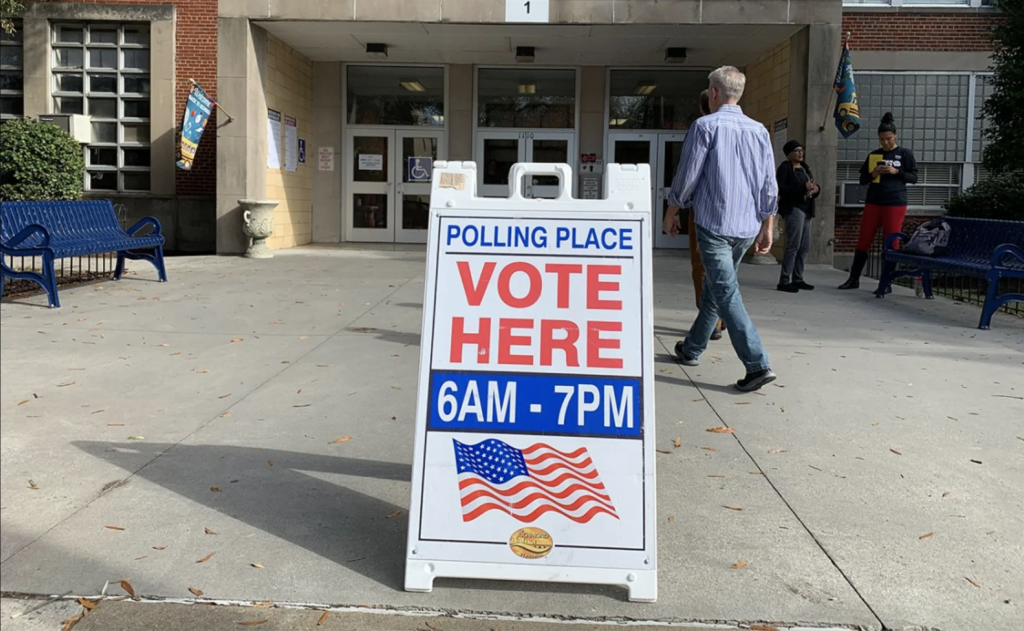The Pathfinder: The Ballot Information Problem

We are taught from a young age that along with the rights we have as citizens come a number of responsibilities. Among the most important of those is our duty to vote. Tens of millions of people will carry out that responsibility this year, casting ballots in primaries, special elections, and the November general election for thousands of local, state, and national offices.
And tens of millions of Americans who are eligible to vote, won’t vote. For the most part, their reasons have nothing to do with apathy, their choice of candidates, or the issues of the day.
What those millions of non-voters represent is a symptom of our nation’s growing ballot information problem.
How can there be such a thing as an information problem when we can take a picture of a flower with a smartphone and have the internet tell us a dozen facts about it? Or learn about the quality of pizza at a diner three towns over using Yelp…all in a matter of seconds?
Because the incentives to compile, analyze, sort, and share the mountain of information about things like the minutes of school board meetings, or the schedule of debates for a city council race – or even when and how to register to vote – just don’t exist.
The outlets we’ve historically relied on to cover these essential, albeit sometimes mundane aspects of our civic life – newspapers, TV, radio, and even digital platforms, are in long-term decline.
The most recent employment data from the U.S. Bureau of Labor Statistics shows news reporter, analyst, and editorial positions in media and communications will continue declining. In the last few months, major newsrooms like the Washington Post and Los Angeles Times have either offered staff buyouts or used layoffs to reduce headcount.
The outlook is not much better for local news, where according to Penelope Muse Abernathy, author of “The State of Local News” report for 2023, “more than half of U.S. counties have no, or very limited, access to a reliable local news source — either print, digital or broadcast.”
As Abernathy writes, the divide between areas that still have reliable coverage and those without it:
…poses a far-reaching crisis for our democracy as it simultaneously struggles with political polarization, a lack of civic engagement and the proliferation of misinformation and information online.
In concrete terms, the divide is growing not just between areas with reliable coverage, it’s growing over the types and scope of what coverage remains.
We can generally count on local media to have a story or two on national or even international politics. This gives people a snapshot of politics and policy – from 30,000 feet.
But it’s at the local level where political coverage suffers the most. At this level, there are roughly 500,00 local elected officials in offices ranging from school boards to city councils, and many more. Reliable coverage – or any coverage at all – is getting harder to find.
That is the real source of the ballot information problem. Yes, presidential, congressional, and statewide campaigns will collectively spend billions getting their message out to voters this year.
But down the ballot, for those offices that don’t have big media budgets – or any budget at all – coverage dries up. And with it, the information voters depend on to make informed choices vanishes as well.
When local media no longer exists to provide people with basic information – how to register to vote, when the polls are open, whether they need to show ID, who is on the ballot, and so on— people lose not just their confidence in voting, but their connection to voting as a civic duty.
It sounds bad. It is bad. But there is also reason to hope.
There are ways we can mitigate the ballot information problem, chief among them using the internet’s enormous power to accumulate and deliver massive amounts of information quickly and cheaply right to someone’s smart phone, tablet, or desktop.
One effective way to do that is putting a high-tech spin on a very old, low-tech staple of polling stations: sample ballots.
Ballotpedia recently debuted version 3.0 of our Sample Ballot Lookup Tool. It combines our encyclopedic coverage of candidates, issues, and policy with hyper-specific maps, election data, and a growing number of candidate surveys to give voters the most comprehensive overview of the people and issues on their ballots.
In other words, this tool delivers on the promise the internet has long had about being able to build essential, meaningful connections between people and their government.
Sample ballot tools are not the ultimate solution to greater voter engagement, or a richer civic culture. But they are essential first steps to ensuring that voters have the information they need to fulfill one of their greatest responsibilities as citizens.
In future columns, I’ll talk about other ways Ballotpedia is building a more robust and engaging civic infrastructure – including a more robust local media, and greening the information deserts.
The Pathfinder is a monthly column written by Leslie Graves, founder of Ballotpedia, for Preserving Democracy. Exploring topics vital to our understanding of American civics and Democracy, The Pathfinder attempts to cut through the noise of political journalism while exploring issues of vital importance to the American voter.





